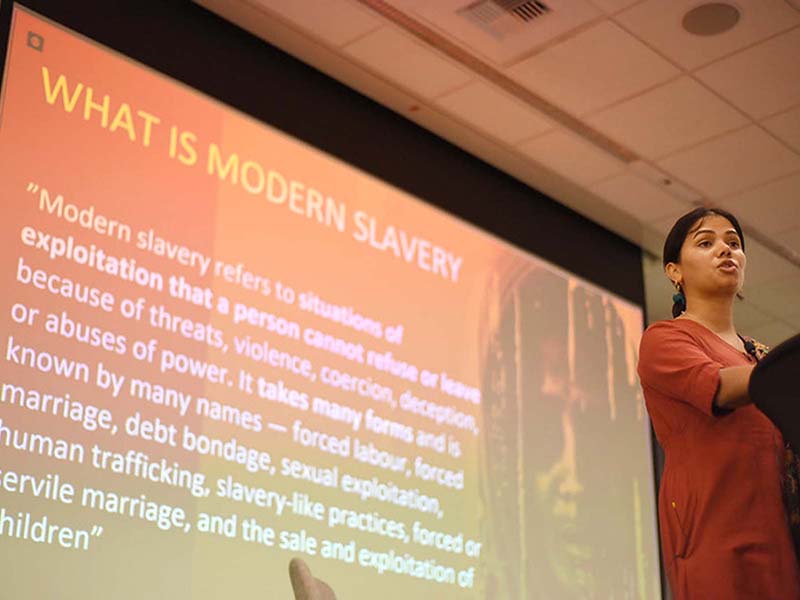
Authors
-
Noora Larson
Former Associate, BSR
-
Annelise Thim
Former Associate Director, BSR
More than a year ago, the Black Lives Matter movement spurred companies into addressing long-standing race and ethnicity issues and developing or stretching their diversity, equity, and inclusion (DEI) goals.
However, most of these initiatives have focused on the US, and companies are struggling to address these issues in other countries. Nevertheless, racism and ethnic discrimination are global problems, from racist abuse of England’s Black football players to sexual violence against Indigenous women in Argentina—and addressing these issues benefits everyone. Increasingly, there is a growing societal expectation for businesses to look globally at their internal DEI programs, including those that address race and ethnicity, and as part of their product portfolio, supply chain, and presence in local communities.
Multinational companies are seeking effective practices for addressing race and ethnicity issues globally. We conducted interviews among BSR’s 300 member companies to identify common challenges companies face when addressing these issues and the potential opportunities this can represent for businesses. We also interviewed civil society organizations around the world to understand their expectations for corporate action.
How Are Companies Addressing Race and Ethnicity Issues outside of the US?
Leading companies are setting global policies with executive support and are creating frameworks for local and regional action plans and initiatives to be developed. Global efforts have been framed around “multi-culturalism,” “full spectrum diversity,” and “culture and heritage.” However, companies’ global commitments do not always come through at the local level. Success in this area depends on support from headquarters and local ownership.
Internally, companies are creating safe spaces for employees to reflect, share, and learn from each other’s experiences related to race and ethnicity and providing opportunities to learn about racism and discrimination through trainings, roundtables, town halls, etc. Although a necessary first step, these practices alone will not achieve lasting impact for employees or the company.
Until recently, most company efforts have used “band-aid” solutions for a specific issue, like quotas for representation or philanthropic contributions. Few companies have designed the necessary structural changes required to address the root causes of racism and inequality inside and outside their operations, and industry collaboration remains limited.
What Do Civil Society Organizations Expect of Companies?
Civil society organizations stressed the need to address discriminatory structures and systems instead of trying to change individuals. The organizations we spoke to noted that currently most internal efforts are top down and focus on behavior change or solely on diversity, with less attention paid to inclusion and equity. For example, setting quotas for leadership positions can ensure accountability, but it can also make certain groups feel that there is no longer a place for them or reinforce the idea that someone was promoted because of their diversity characteristics and not their skills and experience.
Reviewing practices that may perpetuate racism and discrimination, such as recruitment or pay policies, allows for a discussion on how employees and stakeholders can work together to create a more equitable system that benefits everyone.
Based on this research, we have developed a set of global DEI recommendations to address race and ethnicity issues that enables localization and long-term flexible investments. Companies can act on issues related to race and ethnicity in their countries of operations and learn from civil society organizations in the following ways:
- Commit to a global, long-term DEI policy with highest-level buy-in from senior leadership and frameworks for local and regional action plans and initiatives. For example, Cisco developed a set of Social Justice Beliefs that inform how it acts as a business for its employees, customers, and communities. As part of those principles, it has developed specific actions to address racism against the Black Community in the US, and it plans to explore expanding these actions to make them applicable to a global context. ID_Brazil works with global companies with footprints in Brazil and other Latin American countries to review policies and practices across operations and identify racism-related challenges and gaps through its Yes to Racial Equality Seal.
- Focus on dialogue and learning as a first step: Foster safe dialogue for employees to share experiences, connect leaders with underrepresented staff at the local level, and implement training and toolkits for leaders and employees to identify and speak on racism and discrimination (e.g., this toolkit from Berkeley Haas). Accenture has created a training program that supports employees in identifying and speaking on racism (currently available in the US, the UK, and Ireland, and it will soon be available in Canada and South Africa).
- Co-create through partnerships: Companies cannot and should not aim to address racism and discrimination alone. They can establish community engagement board(s), leverage and support employee resource groups (ERGs), focus on creating an effective reporting and ethics hotline, and join collaborations tackling racial justice to work with other companies committed to addressing these issues, like the WEF’s Coalition on Racial Justice in Business or the European Network Against Racism. Companies will need to commit financial and human resources to support these partnerships and ensure they are not adding additional work to groups that are already under-resourced.
- Advocate for systems change: Using an equity lens, examine your company’s business operations and product development processes to identify if and how it has enabled and benefited from systemic racism. Some examples: Starbucks, Airbnb, and Facebook completed civil rights audits. Companies should also explore how they can use their voice to advocate externally for wider systems change. For example, Ben & Jerry’s call to dismantle white supremacy provided actionable steps, and Dr. Bronner’s pledged funding to four organizations fighting racial justice and called out systemic racism in the criminal justice system.
Meeting today’s societal expectations for social justice and robust DEI programs requires long-term planning and readjusting business strategy. By joining the handful of leaders already committing to address race and ethnicity issues throughout their global operations, companies can strengthen existing commitments to human rights and non-discrimination and become a leader in their industry, especially as DEI becomes less about counting employees and more central to meeting growing stakeholder expectations to embed equity across company value chains. For more information, please reach out to our Equity, Inclusion, and Justice team.
BSR’s latest sustainability insights and events straight to your inbox.
Topics
Let’s talk about how BSR can help you to transform your business and achieve your sustainability goals.







